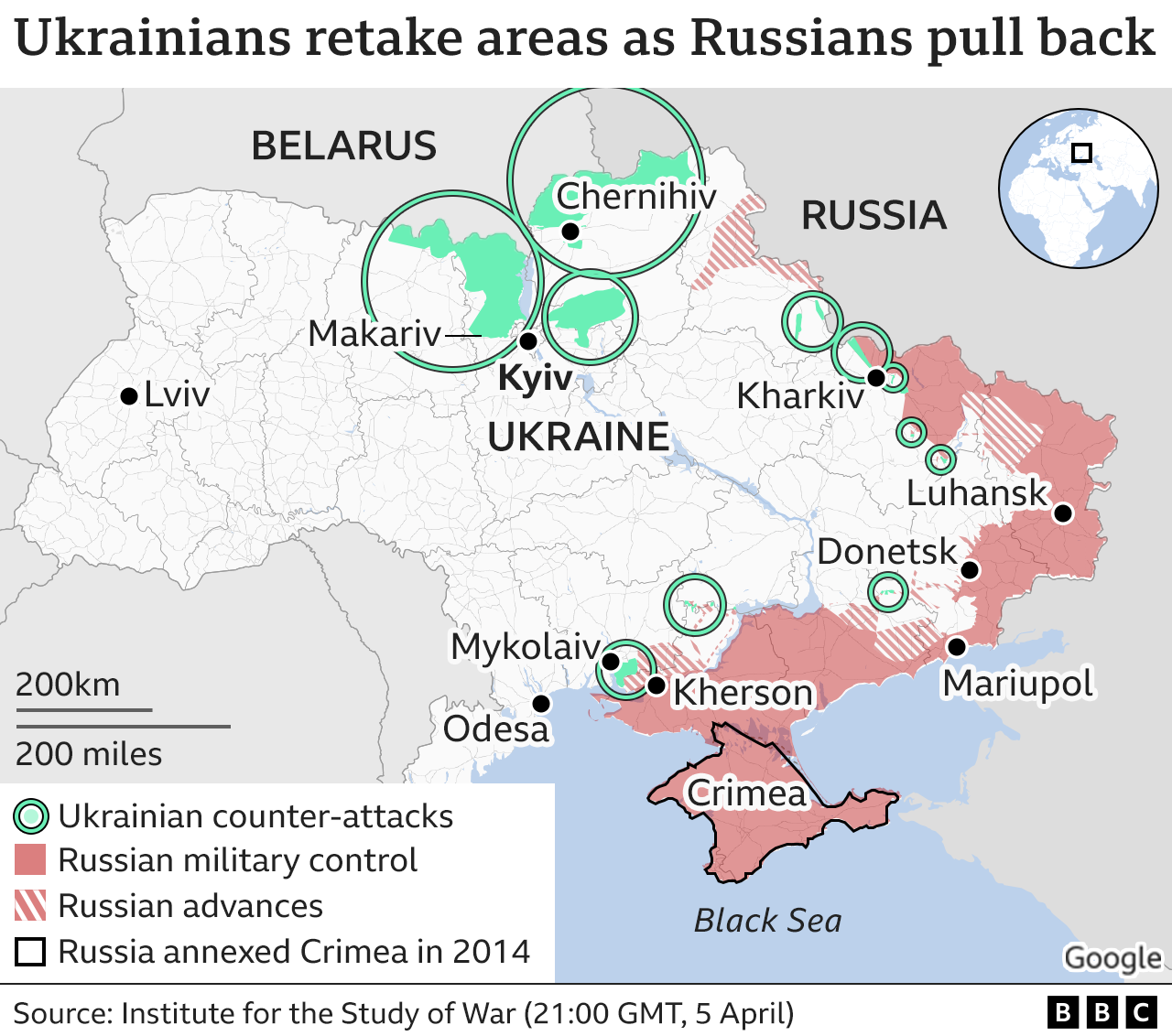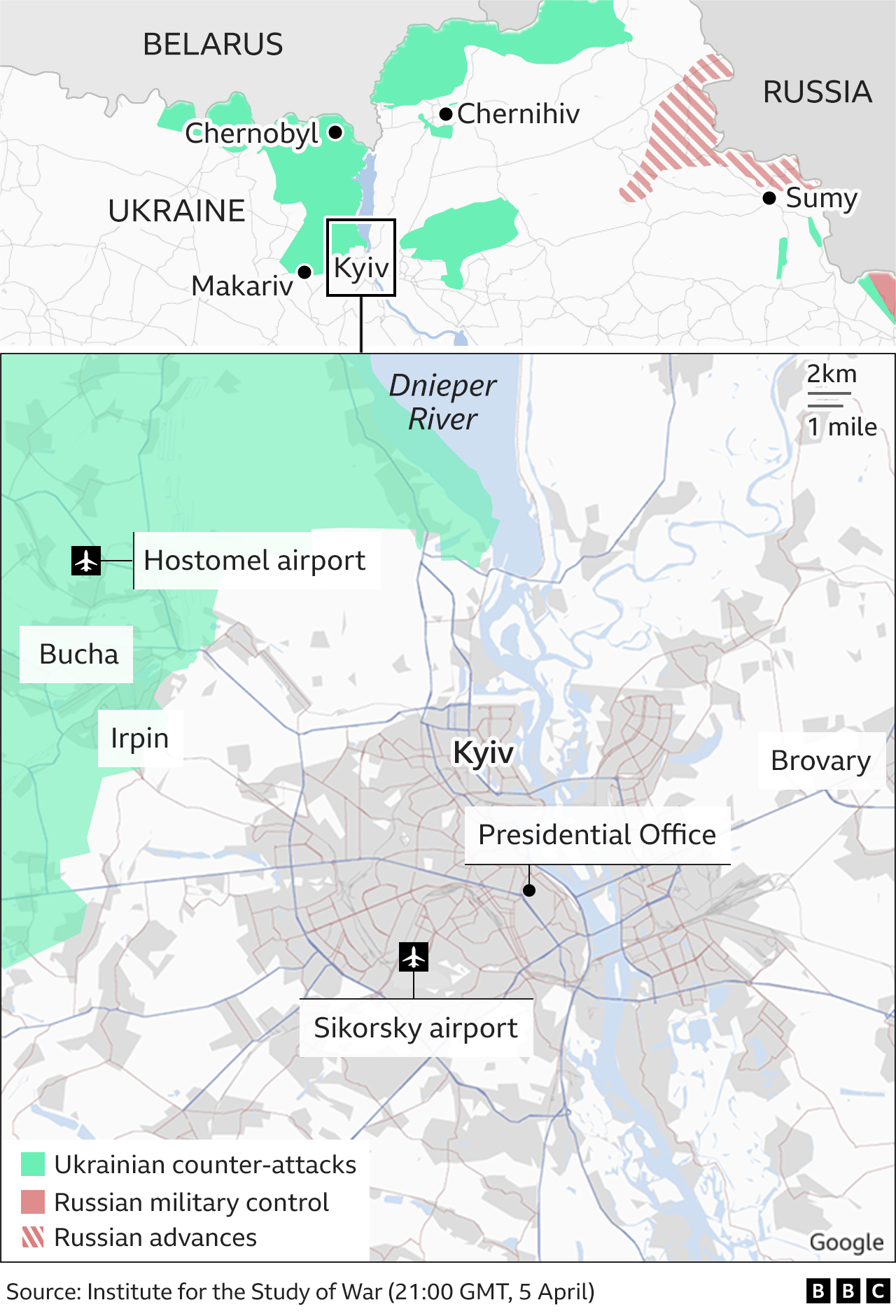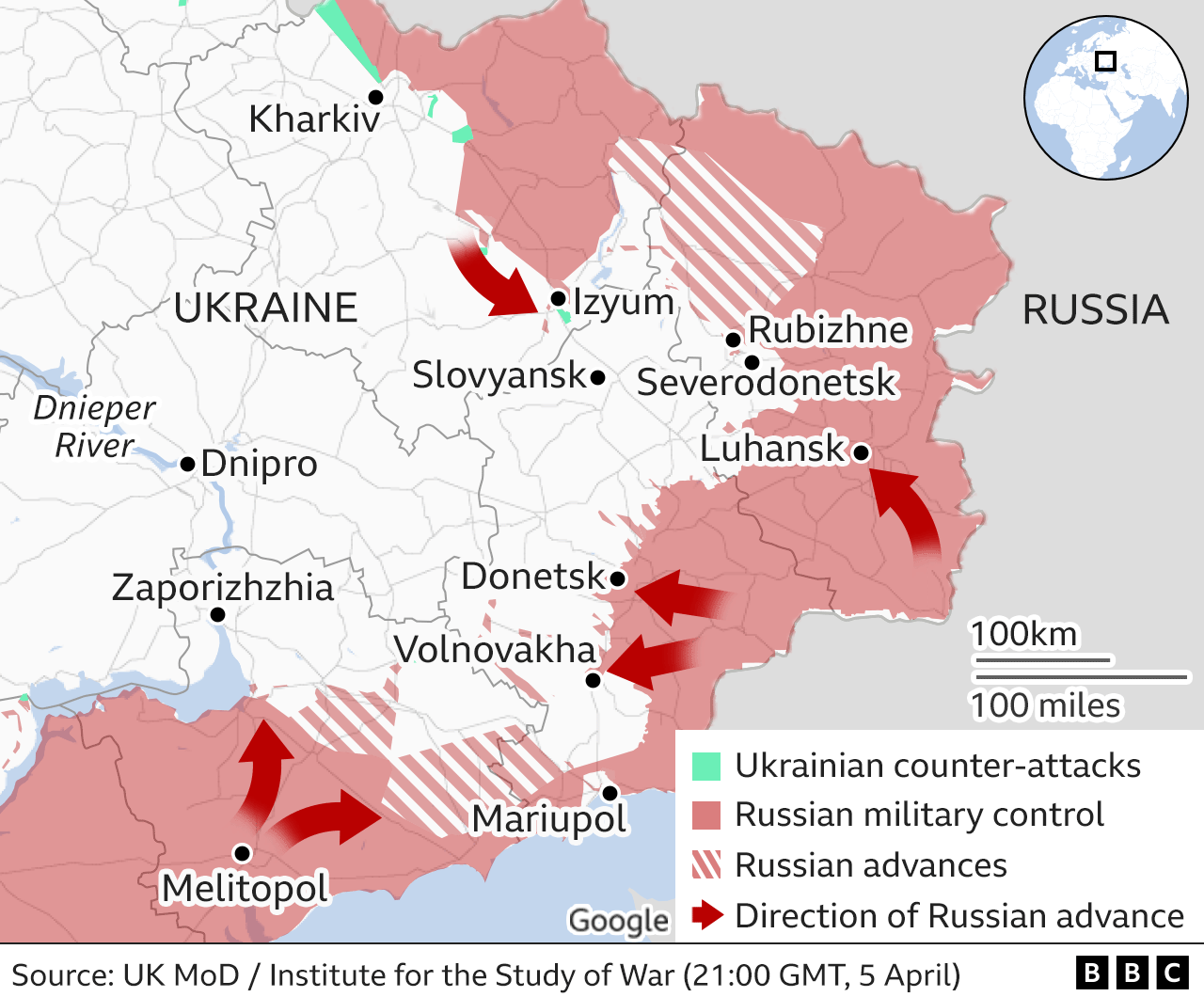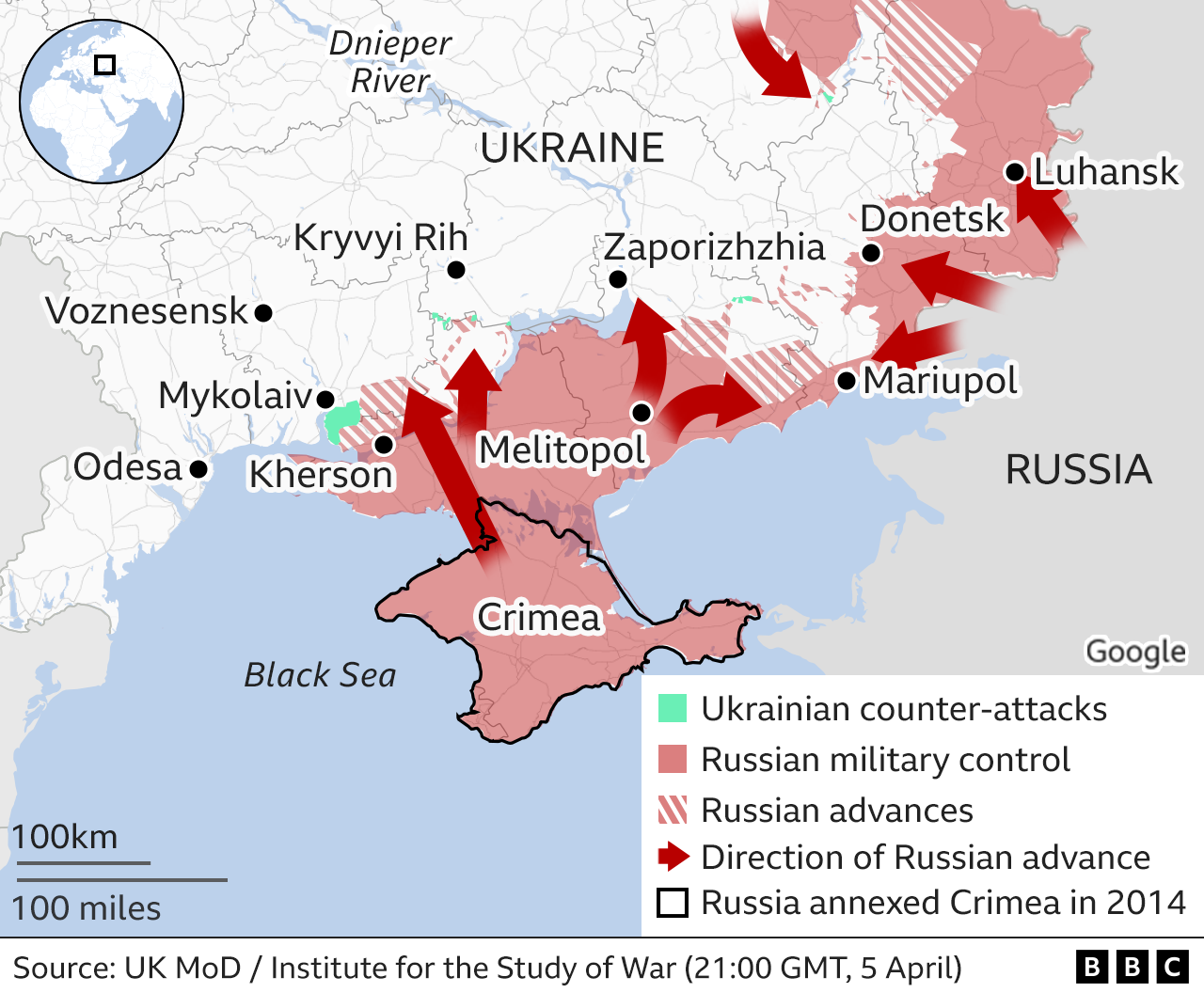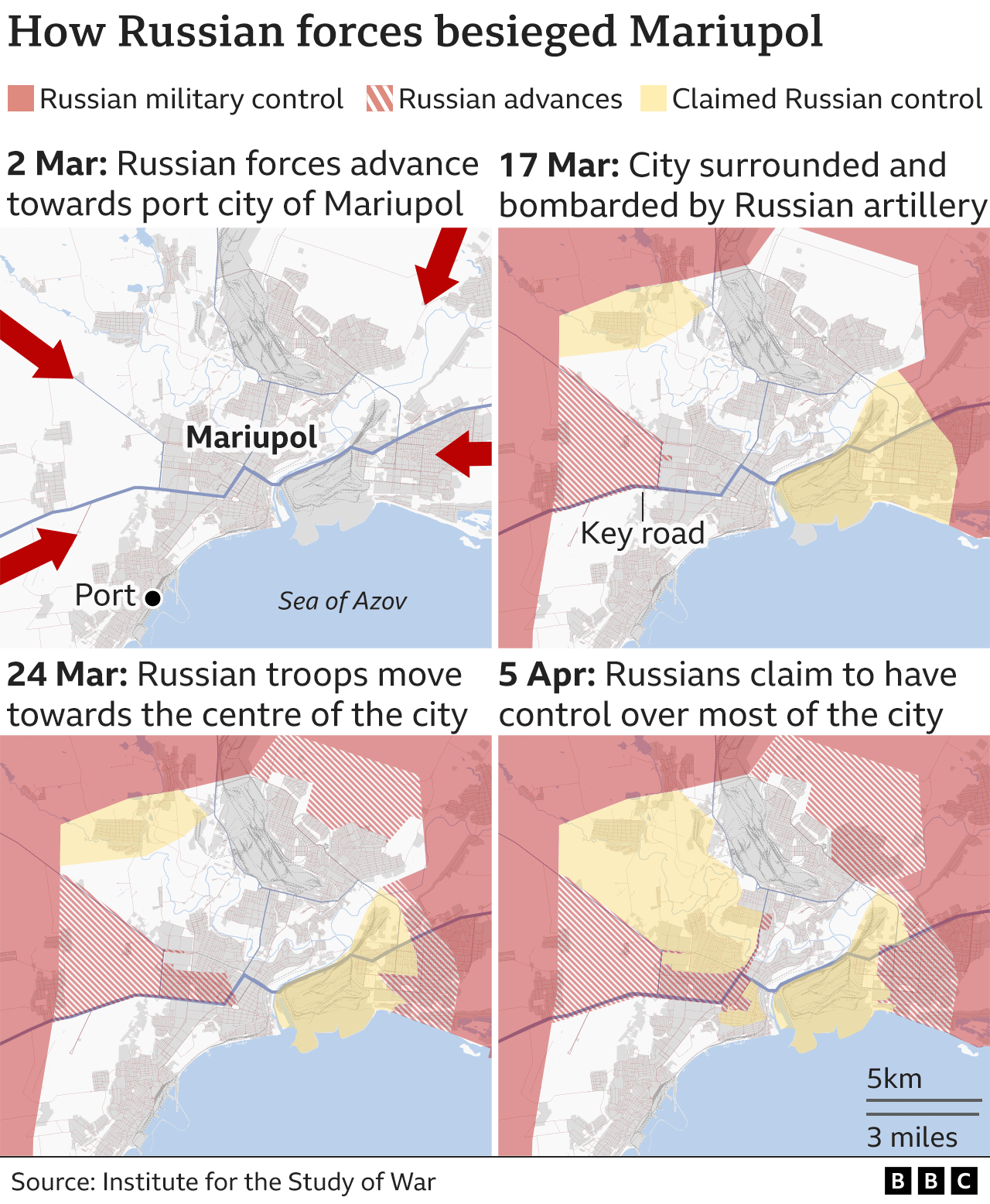BBC News 6 April 2022 - by the Visual Journalism Team
Russia is continuing to withdraw troops from the north of Ukraine as it shifts its focus to capturing more territory in the eastern regions of the country.
Here are the latest developments on day 42 of the invasion:
Russia invaded Ukraine on 24 February, but its forces have now "abandoned the attack on Kyiv" and "largely completed their withdrawal" from around the capital, according to the Institute for the Study of War (ISW).
Analysts at the ISW believe Russian units retreating from around Kyiv are unlikely to "regain combat effectiveness for some time" and it is unclear if they will be redeployed.
Ukrainians retake key terrain in north
Ukrainian forces have retaken large areas around Kyiv in recent days after Russian forces abandoned their assault on the capital and withdrew across the border into Belarus and western Russia.
Images from several of the liberated towns to the west of Kyiv show huge amounts of damage and destruction to lives and property, with allegations of war crimes having been committed by Russian troops.
Ukrainian forces have also retaken large areas around Chernihiv, a strategically important city to the north-east of Kyiv that sits between the capital and the Russian border.
To the north of Chernihiv, the Ukrainian army is trying to re-establish control of the country's border with Russia, according to the ISW.
War in Ukraine: More coverage
- LIVE: Latest updates from Ukraine
- FROM BUCHA: Execution-style killing
- TEENAGER: 'I saw soldier shoot my father dead'
- SATELLITE IMAGES: Fact-checking Russia dismissals
- READ MORE: Full coverage of the crisis
Russia targets full control in the east
With recent setbacks elsewhere in the country, Russian officials have said that the focus of its forces is now the "complete liberation" of the Donbas.
The Donbas broadly refers to Ukraine's eastern regions of Donetsk and Luhansk, where Russian-backed separatists held significant territory before Russia's invasion.
Russian troops in the region are said to have made minor gains in recent days, with the focus primarily on air and artillery attacks around Rubizhne.
Analysts at the ISW say Russian troops are hoping to advance down from Izyum towards Slovyansk and encircle Ukrainian forces to the east.
BBC defence correspondent Jonathan Beale, who is in the Donbas, saw a tailback of traffic stretching 80km (50 miles) on Wednesday as thousands of people try to flee the fighting.
Russian progress slows in the south
Russian forces initially made rapid gains in the south, with their main objective being the creation of a land corridor between Crimea, which it annexed in 2014, and areas held by Russian-backed separatists in Donetsk and Luhansk.
Standing in the way of that objective has been the port city of Mariupol, which has been encircled by Russian forces since the start of March.
Ukrainian forces remain in control of the city centre despite the steady Russian advance, but analysts say it is unclear how much longer the Ukrainians can hold on.
The UK Ministry of Defence says Russian forces are preventing humanitarian aid from reaching the city, where more than 100,000 people are thought to remain trapped.
To the west, Russia had been attempting to push towards Odesa, with the aim of cutting off Ukraine's access to the Black Sea.
Their advances stalled at Mykolaiv, where a counter-attack by Ukrainian troops pushed Russian forces back towards the city of Kherson.
But Russia continues to launch air strikes against Odesa, with oil facilities in the city targeted in an attack earlier this week.
By David Brown, Bella Hurrell, Dominic Bailey, Mike Hills, Lucy Rodgers, Paul Sargeant, Mark Bryson, Zoe Bartholomew, Sean Willmott, Sana Dionysiou, Joy Roxas, Gerry Fletcher, Jana Tauschinsk, Debie Loizou and Prina Shah.
About these maps
To indicate which parts of Ukraine are under control by Russian troops we are using daily assessments published by the Institute for the Study of War with the American Enterprise Institute's Critical Threats Project.
From 2 March this daily assessment differentiated between "Assessed Russian-controlled Ukrainian territory" and "Assessed Russian advances in Ukraine", the latter indicating areas where Russians are believed to have launched attacks from but which they do not control.
To show key areas where advances are taking place we are also using daily updates from the UK Ministry of Defence and BBC research.
The situation in Ukraine is fast moving and it is likely there will be times when there have been changes not reflected in the maps.

